LLMs are disrupting search – is your brand ready?
With zero-click results and skyrocketing referral traffic, LLMs are the new gatekeepers of the web. Adapt your strategy for this shift.
Large language models (LLMs) are changing how people search for information online, challenging traditional search engines and reshaping how brands connect with their audiences.
As LLMs like ChatGPT and Google Gemini gain prominence, businesses must adapt to a landscape defined by conversational AI, zero-click results, and new consumer behaviors.
Here’s what this shift means for your brand and how to stay ahead.
LLMs drive referral traffic, but at what cost?
The digital landscape is in constant flux, but the rise of LLMs is significantly transforming how consumers find brands.
While search has long been the cornerstone of how consumers discover and engage with brands, LLMs are introducing a new paradigm that challenges traditional approaches and demands a fresh perspective.
Brands will see a 50% loss of search traffic over the next three years, Gartner predicts.
Our internal data reveals an 800% increase in referral traffic from LLMs between Q3 and Q4 of 2024.
However, despite this growth, LLMs’ primary goal is to deliver answers directly, often resulting in “zero-click” results, where consumers do not visit additional websites.
Perplexity introduced one-click shopping in November to keep consumers from leaving for branded websites.

Dig deeper: How to segment traffic from LLMs in GA4
The front door to the web has changed
LLMs have grown in capability, fundamentally transforming how customers engage with content online and reshaping how they access the web.
Once driven by apps, search engines, and browsers, the web now has a new front door: LLMs.
Today, they dominate these entry points. Consider these examples:
- Apple Intelligence: Siri now integrates with ChatGPT, and the iPhone’s action button enables direct voice chats with ChatGPT.
- Meta apps: On Instagram and Facebook, the search bar now incorporates Llama, Meta’s LLM, allowing users to build images, ask questions, or search within the app.
- Google Chrome: The URL bar, long used as a quick search tool, now lets users interact with Gemini or view AI-generated overviews when performing traditional searches.
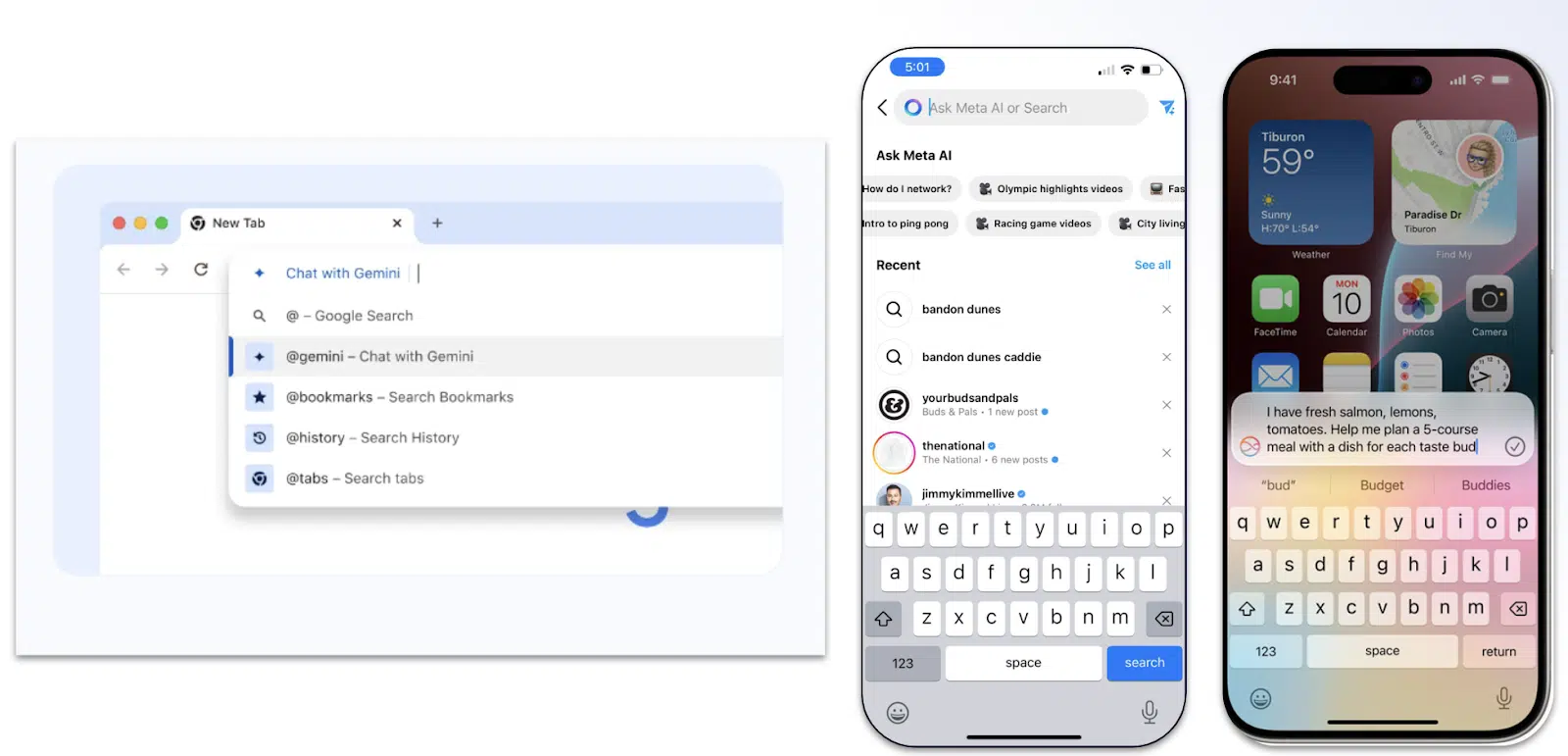
The black box of prompts: A challenge for brands
One of the biggest challenges with LLMs is the lack of transparency around user prompts.
Unlike traditional search, where keyword data is readily available, the specific questions and conversations that drive LLM responses are often hidden from view.
This creates significant hurdles for brands:
- Understanding user intent: Without access to prompt data, it’s difficult to understand what questions and needs are driving consumer interactions with LLMs.
- Content and strategy alignment: Aligning content and brand messaging with user prompts becomes challenging, potentially leading to missed opportunities.
- Performance measurement: Measuring the effectiveness of brand visibility in LLMs is difficult without a clear understanding of the prompt landscape.
- Rank isn’t all that matters: While ranking is a key metric for SEO, in a world of LLMs, it’s more complex. Beyond ranking, you must also consider accuracy, sentiment, relevance, and outbound links. For example, is the result linked to your site or a Reddit comment?
- Change over time: LLMs don’t always provide the same response, even when the same user uses the same prompt. Our internal data below demonstrates how results can vary from day to day. This variance highlights the importance of daily monitoring to understand what factors are driving the changes. Is it a new model, or did you update the training data on your website?
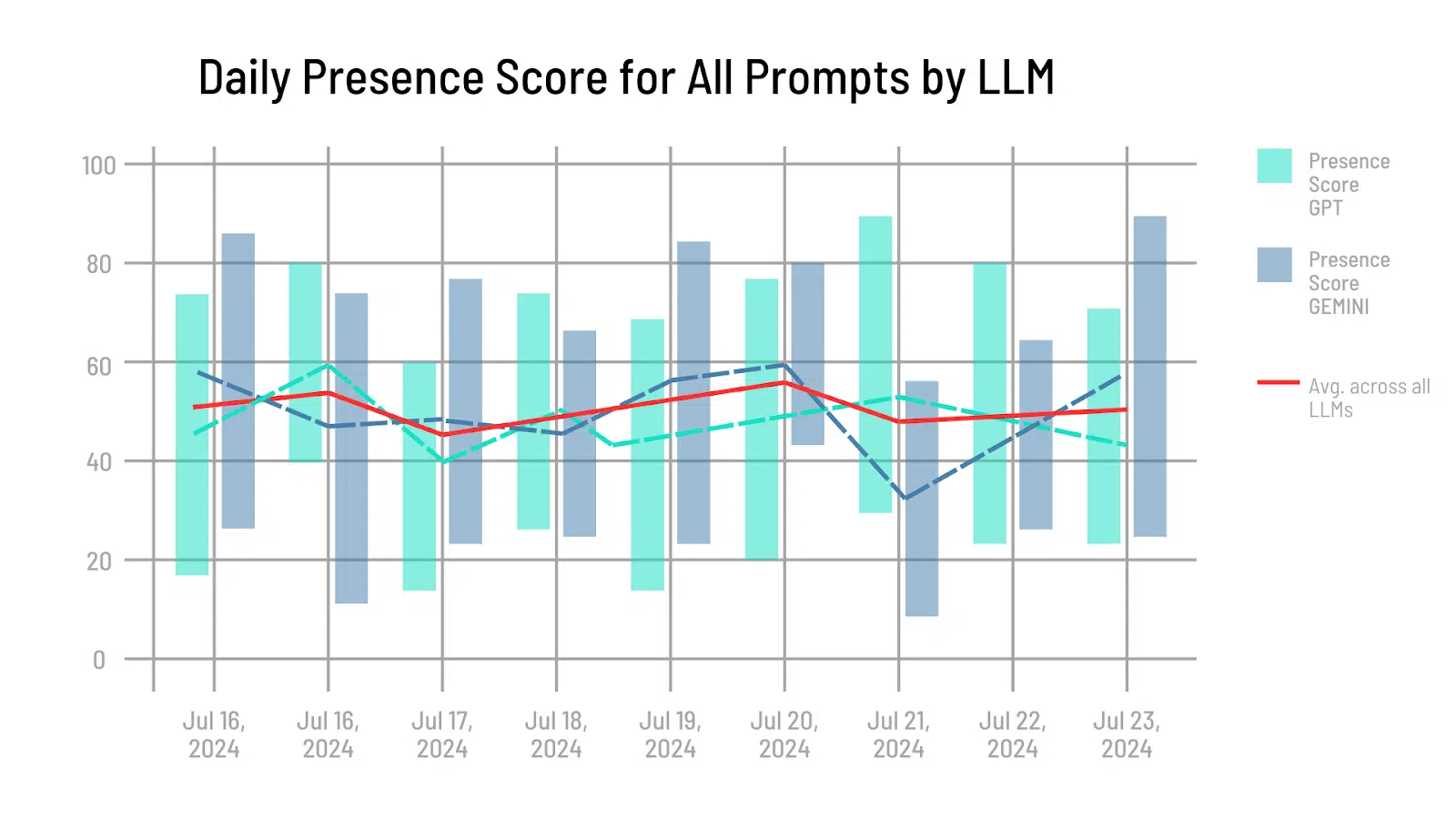
Surfacing brands across prompts
We’ve analyzed data from LLMs to understand how brands appear across different prompts.
For 17 retail-related prompts, brands were surfaced in 82% of the results.
The number of brands mentioned ranged from 2 to 16 per prompt, which highlights the importance for brands to know their competitors.
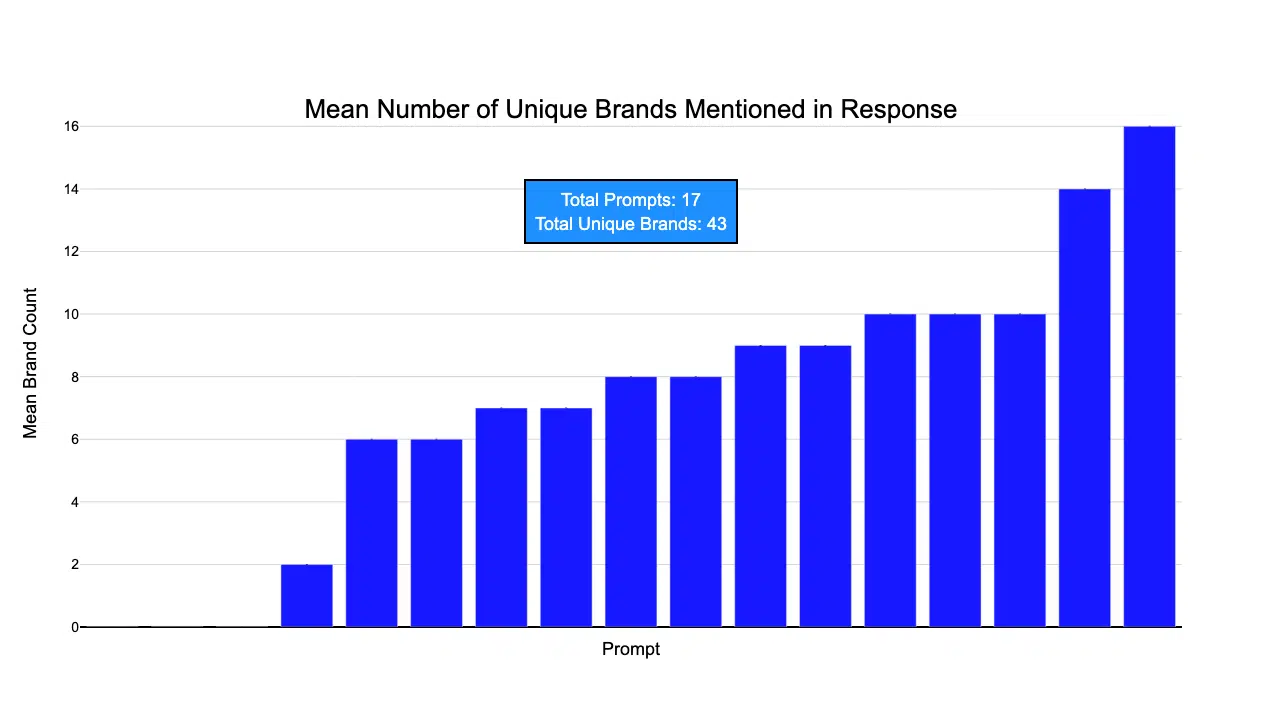
For example, when looking at running shoe-related keywords, you’ll see expected brands at the top, but the results also show a wide and varied tail, including everything from direct brands to retail stores.
Understanding this data helps you gauge how to compete effectively.
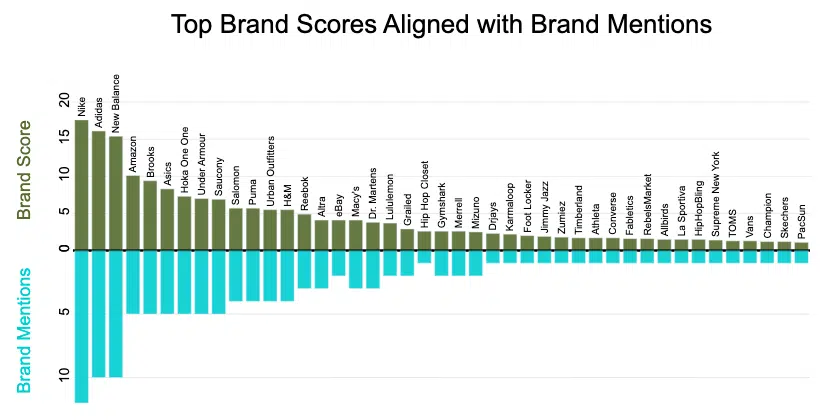
Another breakdown by topic reveals a variety of brands surfacing, with results varying based on the topic.
This data, which requires advanced platforms for visualization, is not often considered by many brands, who may still rely on manual methods.
Tools are being developed to simplify this process and make it easier for brands to track.
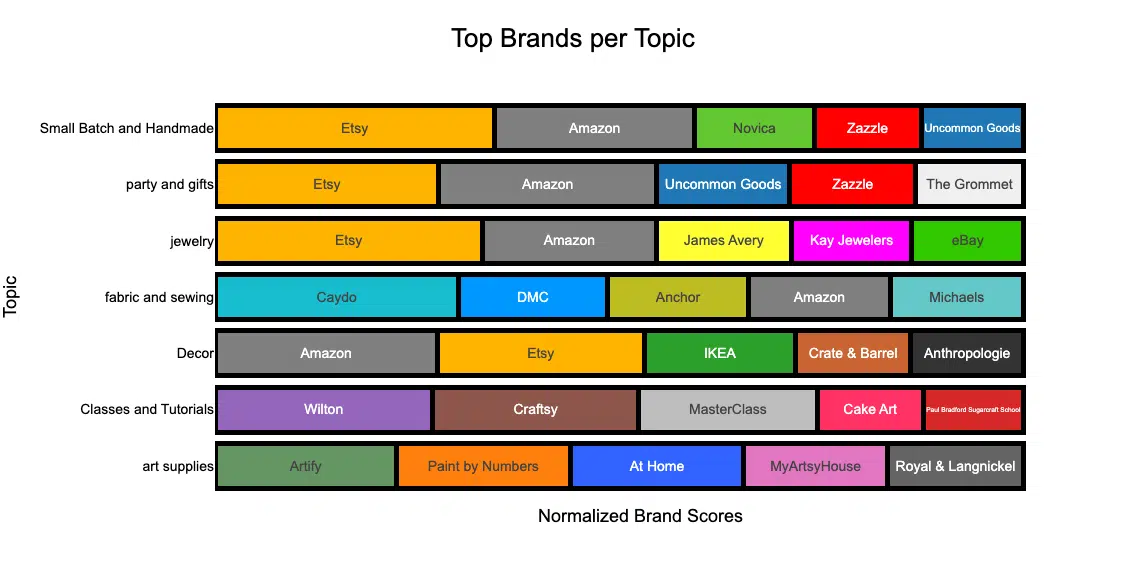
Dig deeper: Optimizing LLMs for B2B SEO: An overview
Navigating the LLM landscape: Strategies for brands
Despite these challenges, brands can take proactive steps to adapt to the LLM-driven search landscape:
- Focus on conversational content: Create content that answers natural language questions and addresses conversational prompts.
- Use quotes and statistics: Including data and statistics in content positively impacts LLMs, a Princeton study suggests.
- Optimize for relevance and accuracy: Ensure brand information across all platforms is accurate, complete, and aligned with potential LLM queries.
- Build a strong brand presence: Strengthen your brand’s reputation and presence across all channels to increase the chances of being mentioned by LLMs.
- Monitor and adapt: Continuously track LLM responses and adjust content and strategies based on trends and insights.
Dig deeper: Decoding LLMs: How to be visible in generative AI search results
The future of search is conversational
LLMs are ushering in a new era of conversational search, where users engage with AI to find information and discover brands.
While this shift creates challenges in prompt visibility and performance measurement, it also offers brands opportunities to connect with consumers in more natural and engaging ways.
By understanding the dynamics of this evolving landscape and adopting proactive strategies, you can position your brand for success in the age of AI-powered search.
Contributing authors are invited to create content for Search Engine Land and are chosen for their expertise and contribution to the search community. Our contributors work under the oversight of the editorial staff and contributions are checked for quality and relevance to our readers. The opinions they express are their own.
Related stories